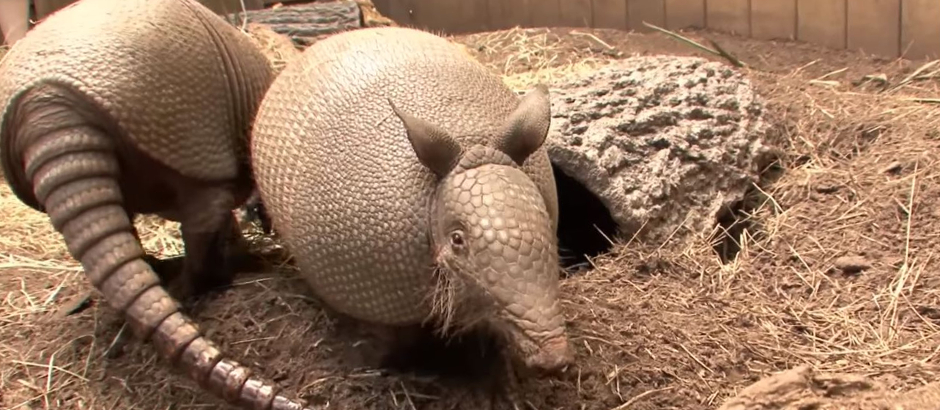How to Get Rid of Armadillos

Armadillos are some of our more strange looking animals. They are nocturnal and therefore, not very often seen during the day. Often their presence is noted not so much by sight of them but by what they have done to your flower beds. Should you suddenly notice a hole in the ground of perhaps six inches or more in diameter, it probably is an armadillo hole.
Armadillos can root up your yard and make it look very messy -- not as bad as a wild pig might tear up your grass, but it is still quite destructive work. Armadillos tear up your landscaping while digging for food. Their feedings consist mainly of roots and grubs. Since both roots and grubs are underground, armadillos are forced to dig up the ground in order to survive.
Another concern about armadillos is that they may transmit leprosy to humans. This is rare, but it can happen. It seems that armadillos could be seen as culprits of spreading leprosy as well as the vessels to find a cure for leprosy, since they are being extensively studied with regard to this disease. In fact, in some states they are valuable enough so that it may be illegal to kill them or to trap them unless you are a licensed trapper. When threatened, an armadillo may roll itself into a ball, protecting his softer inner body by presenting the hard exoskeleton for protection.
What Can You Do To Prevent Armadillos From Coming Into Your Yard?
This is extremely difficult to do. Since armadillos are fabulous diggers, they easily dig underneath fences. One of the headaches armadillos present is that they not only burrow underneath fences, they also burrow underneath cement patios, which may cause them to crack and break.

They also live in burrows during the day so you won't see them easily unless you happen to step into a hole (and twist your ankle). You still won't see the armadillo even then, but you will at least know where it lives and where a trap may be placed.
There is no food that will appeal to them more than another unless its roots or grubs. If you can rid your property of both, you may have a good chance that armadillos will pass your property by unscathed.
Repellents: Mothballs and devices that make ultrasonic sounds have been tried and failed in repelling these animals. Pouring mothballs down the armadillo hole dug will make it move, but it may only move over a foot and dig another hole there. So then you have to deal with two holes instead of one. Ammonia is also not very effective since it evaporates fairly quickly in the air. Sprays that are sold in stores are said to work wonders, but none of that has been substantiated. In short, repellents do not often work.
Techniques And Exclusion: Getting rid of armadillos is not an easy task. These animals are not readily swayed to step into a cage. It can be done if someone has experience and knows the habits of armadillos very well. Once it is caught, the armadillo can be relocated into a less inhabited area.
With exclusion fences, the chances of keeping armadillos away from private property improve greatly. However, this can be quite a lot of work. Depending on the size of your property, digging eighteen inches into the ground around the entire perimeter and then burying the exclusion fence, is more work than many home owners want to invest.
Because there is much labor involved, many people will not opt for the exclusion fence. Instead, they wait until there is an actual need to have an armadillo removed. Then they can decide on the method of removal, which may be limited legally but is very effective practically.
Other armadillo information:
About armadillos: Appearance, biology, life cycle, habitat, diet, behavior
What are some problems caused by armadillo digging?
Describe armadillo skin/armor, and how it helps the animal
How to keep armadillos away from your property
How did armadillos get into North America?
How do you know if you have an armadillo under your shed or porch?
What is the best bait to trap an armadillo?
How to use one-way exclusion funnels to remove armadillos without trapping them
What are some humane ways to kill an armadillo in a cage?
What should I do with an armadillo after I catch it?
Do armadillos pose a threat to pets?
Is it possible for Armadillos to transmit the leprosy to the people?
Why do armadillos dig?
About Us
We are the Pest Education Network, a non-profit organization that focuses on wildlife and pest removal education. Our approach utilizes Integrated Pest Management, a strategy advocating prevention and humane methods.


